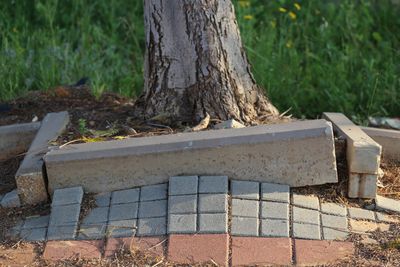Problems with Invasive Tree Roots
Trees that have invasive root systems invade pipes because they contain the three essential elements to sustain life: air, moisture, and nutrients. Several factors can cause a pipe to develop a crack or small leak. The most common is the natural shifting and movement of soil as it shrinks during droughts and swells when rehydrated. Once a pipe develops a leak, the roots seek out the source and grow into the pipe. Roots that damage the pavement are also seeking moisture. Water becomes trapped in areas beneath sidewalks, paved areas, and foundations because it can’t evaporate. Trees with shallow root systems can create enough pressure to crack or raise the pavement.
Common Trees with Invasive Roots
This invasive tree root list includes some of the worst offenders:
Hybrid Poplars (Populus sp.) – Hybrid poplar trees are bred for fast growth. They are valuable as a quick source of pulpwood, energy, and lumber, but they don’t make good landscape trees. They have shallow, invasive roots and seldom live more than 15 years in the landscape. Willows (Salix sp.) – The worst members of the willow tree family include the weeping, corkscrew, and Austree willows. These moisture-loving trees have very aggressive roots that invade sewer and septic lines and irrigation ditches. They also have shallow roots that lift sidewalks, foundations, and other paved surfaces and make lawn maintenance difficult. American Elm (Ulmus americana) – The moisture-loving roots of American elms often invade sewer lines and drain pipes. Silver Maple (Acer saccharinum) – Silver maples have shallow roots that become exposed above the surface of the soil. Keep them well away from foundations, driveways, and sidewalks. You should also be aware that it is very difficult to grow any plants, including grass, under a silver maple.
Planting Precautions for Invasive Trees
Before you plant a tree, find out about the nature of its root system. You should never plant a tree closer than 10 feet (3 m.) from the foundation of a home, and trees with invasive roots may need a distance of 25 to 50 feet (7.5 to 15 m.) of space. Slow-growing trees generally have less destructive roots than those that grow quickly. Keep trees with spreading, water-hungry roots 20 to 30 feet (6 to 9 m.) from water and sewer lines. Plant trees at least 10 feet (3 m.) from driveways, sidewalks, and patios. If the tree is known to have spreading surface roots, allow at least 20 feet (6 m.).
